#280 b.c.
Text
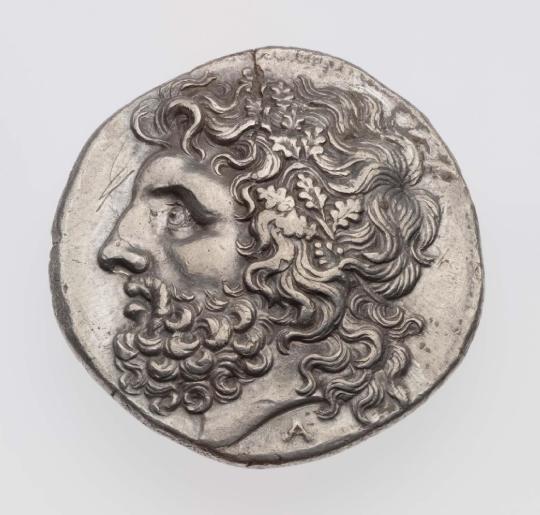

~ Tetradrachm of Lokroi Epizephyriori with head of Zeus, struck under Pyrrhos of Epiros.
Culture: Greek
Period: Early Hellenistic
Date: 280–277 B.C.
Medium: Silver
#ancient#ancient art#history#museum#archeology#ancient greek#greece#greek#ancient currency#coin#archaeology#tetradrachm#Lokroi Epizephyriori#Hellenistic#silver#280 b.c.#277 b.c.
547 notes
·
View notes
Photo





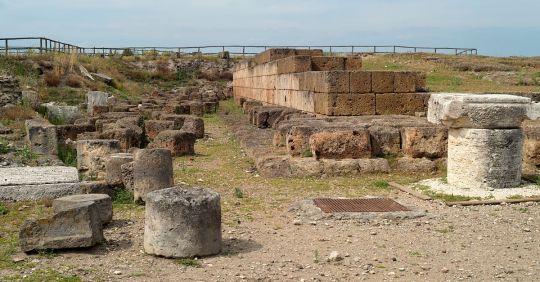
Ancient Etruscan Tomb Discovered in Vulci, Italy
An intact tomb from the 6th century B.C. has been discovered in the Etruscan necropolis of Casale dell’Osteria in Vulci in Lazio, central Italy. The 2,500-year-old tomb is richly furnished with pottery and contains an incredibly rare final meal on a brazier.
Archaeologists with the Vulci Foundation made the discovery earlier this month when the excavation revealed two tufa stone slabs two feet wide and weighing 40 kilos (88 lbs) in place in front of the entrance to the tomb. The team used a crane to carefully remove the slabs and uncover the entrance. Inside, they found a chamber tomb with a rock-cut platform and an array of about 30 vessels, mostly black bucchero pottery, cups, glass unguentaria and amphorae, all intact and in impeccable condition.
On the right side of the chamber towards the entrance is a bronze brazier still containing the coals and the skewers that held the meat cooked for the final repast. The cinerary remains of the tomb’s owner were placed inside an olla — a squat, rounded pot commonly used by the Etruscans as containers for the entombment of cremated remains — on top of the rock-cut platform.
It is believed to be the tomb of a woman, based on the lack of weapons and on the presence of a spindle whorl. She must have been someone of significant wealth to afford so richly furnished a tomb.
Vulci was a prosperous Etruscan city-state 50 miles northwest of Rome. It was the birthplace of the legendary sixth king of Rome, Servius Tullius (r. 578-535 B.C.) and an important center of ceramic arts, metal mining and metal crafts. It was also a center of trade, purveying expensive imports of Greek pottery, balms and unguents from the east.
It was defeated by Rome in 280 B.C.; Roman forces took its coastal territory, cutting off Vulci’s access to the sea and strangling the maritime trade that had been so integral to its success. The city declined and was ultimately abandoned. No new town was ever built over it.
Part of it survived underground, however, in Vulci’s necropoli. Tens of thousands of tombs containing priceless artifacts from every day use objects to entire chariots and silver hands. An unpopulated area far from the prying eyes of any authorities with tons of unknown and unrecorded portable archaeological wealth made a perfect target for looters and over the decades Vulci has been re-sacked on a vast scale. The discovery of an intact, unlooted tomb with its contents complete and undamaged is therefore incredibly rare.
#Ancient Etruscan Tomb Discovered in Vulci Italy#ancient tomb#ancient grave#ancient necropolis#ancient artifacts#archeology#archeolgst#history#history news#ancient history#ancient culture#ancient civilizations
194 notes
·
View notes
Text
It's been a long...."while" since I last written something niche about hollow Knight (last post was written in early 2024, we're almost heading for '25 good lord).
So to keep myself sound about there being no news for silksong and it's release day I'll speculate on the time era it resides in. (Take with the fattest grain of salt please)
Lurien the watcher owns a telescope (invented in 1608, wonder what's the bug equivalent of that). But there's underground so....I guess it could've been something like binoculars (invented in ~1609? We're not that far off as I imagined)
Even though there's tram stations; stag stations are more accessible which would mean, in a very long stretch, that they're akin to trains (invented in 1804)
The pale king could've have invented buzzsaws in-universe and all the shenanigans inside the white palace (he's a higher being after all). Saws were invented in late 18th century.
I would also like to mention Charm lover saluba has something akin to a cash register in her shop (something invented in 1879) but it could've been a souvenir.
Let's not forget the lighthouse in the abyss. Invented in 280 B.C but in game it takes the appearance of gothic architecture (around 12th-16th century). Sounds like a long stretch to make because the pale king had some influence involved.
I am undoubtedly missing A LOT of stuff to mesh into a proper conclusion, but looking at backrounds (especially the city of tears) I think that hollow Knight takes place in a post apocalyptic world of the 19th-20th century. (They were still monarchs back then, if we're assuming this is early, early 20th century)
But then again, I could be wrong. It's starting to give me wild West vibes the longer I think of it.
#hollow knight#schizoposting#speculation#like crazy speculation#i dont fucking know#hollow Knight time era
3 notes
·
View notes
Note
So, my understanding is that FengShen Yanyi is before Journey to que west. My question is, are the events of Lotus Lantern before Sun Wukong wants a place in heaven? I know those three stories the most, but I don't know if there are any others that I should know. I also wanted to ask where Chang'e's story falls between these stories.
Shang Dynasty: c.1750 B.C. - c.1066 B.C.
The Investiture of the Gods, also known by its Chinese names Fengshen Yanyi (Chinese: 封神演義) story is set in the era of the decline of the Shang dynasty (1600–1046 BC) and the rise of the Zhou dynasty (1046–256 BC).
Zhou Dynasty: Western Zhou: 1066 B.C. - 221 B.C.
Chang'e first appeared in Guicang, a divination text written in Zhou Dynasty (1046 BC - 256 BC).
Qin Dynasty: 771 B.C. - 206 B.C.
Wukong bursting out of the stone (Warring States Period)
Han Dynasty: 206 B.C. - 220
Wukong Dies (at the age of 342)
Wukong Trapped Under Five Element Mountain
Liu Xiang (Liu Chenxiang's father), a scholar of the Han Dynasty (first draft)
Three Kingdoms: Wei: 220 - 280
Western Jin: 265 - 316
Eastern Jin: 317 - 420
Sixteen Kingdoms: 304 - 420
Southern and Northern Dynasty: 420 - 581
Sui Dynasty: 581 - 618
Tang Dynasty: 618 - 907
Journey to the West (Chinese: 西遊記) is an extended account of the legendary pilgrimage of the Tang dynasty Buddhist monk Xuanzang
The Magic Lotus Lantern is a Chinese fairy tale from the Tang dynasty (618–907). (recreation in Qing Dynasty)
Five Dynasties: 907 - 979
Song Dynasty: 960 - 1279
Liao Dynasty: 907 - 1125
Western Xia Dynasty: 1032 - 1227
Jin Dynasty: 1115 - 1234
Yuan Dynasty: 1279 - 1368
Ming Dynasty: 1368 - 1644
Qing Dynasty: 1644 - 1911
I'm taking this from when the legends are either first mentioned OR have said IN THE TEXT when they are to take place. Chang'e was first mentioned in the Zhou Dynasty, but I am not sure if the story is meant to be even earlier depending. I have also seen that the story of Chang'e first appeared in the Shang Dynasty hexagram "Gui Zang ". The complete story of Chang'e flying to the moon was first recorded in "Huainanzi·Lanmingxun" of the Western Han Dynasty. During the Eastern Han Dynasty, the relationship between Chang'e and Yi was established, and Chang'e turned into a toad that made medicine after entering the moon palace. After the Northern and Southern Dynasties, the image of Chang'e returned to being a woman. In Han Dynasty portraits, Chang'e has the head of a human and the body of a snake. Her hair is in a high bun, she wears a long jacket with wide sleeves, and her long tail is decorated with short, barb-shaped feathers. After the Northern and Southern Dynasties, Chang'e was portrayed as a peerless beauty.
Xiyouji is also very much in the Tang dynasty and is even said to have prolonged the Tang dynasty within the novel. Wukong’s birth and creation is to be sometime in the Warring States period and to be guessed in the Qin Dynasty. Lotus Lantern ALSO was created in the Tang Dynasty and from my understanding and its first interaction is when Liu Xiang (someone said Liu Xi) is a scholar of the Han Dynasty and went to Beijing to take an exam (this is the version of lotus Lanter were he gets remarried) He passed by the Huashan Temple and wrote a poem in the temple. He teased the temple deity, the Sanseng Mu of Huayue. Sanseng Mu was so angry that they wanted to kill him but fell in love with him in the end. I cannot say that if the original version is meant to be before or after the Wukong has been punished by heaven and is under the mountain but considering that Wukong mentions Erlang's mother and not his nephew that would be a good suggestion that is after in this version. It is in the Qin Dynasty do we see the version that Lotus Lantern being definitively placed after Wukong going on his journey in Tang Dynasty, making the legends VERY recent in comparison to others. This is the version where Chengxiang's father doesn't get remarried and is the more popular of the two honestly.
#anon ask#anonymous#anon#ask#jttw#journey to the west#sun wukong#xiyouji#lotus lantern#chang’e#erlang shen#Jian Yang#sorry if this is a mess#which is is#but like#legends go through a lot of revisions#i would rec NOT trying to pinpoint timelines in chinese mythos#it is just a headache but I shall try to offer you options#Like when the legends start and like when the mythos really became what we know about them now#These things are OLD people#things CHANGE
13 notes
·
View notes
Text
Post-secondary students in British Columbia who require loans and other services while in school will soon have access to more support, according to the province.
On Tuesday, the B.C. government announced that interest-free student loan maximums will double starting in August. Students without dependents will be eligible for up to $220 per week, while those who have dependents will qualify for up to $280 weekly.
This is the first increase in loan maximums since 2006, the province says.
Meanwhile, loan repayment will be a little easier, too: graduates earning less than $40,000 a year won't have to make payments while looking for jobs in their fields.
Full article
Tagging: @politicsofcanada
#cdnpoli#canadian politics#canada#canadian news#canadian#british columbia#BC#tuition#student loans#education#post secondary education
35 notes
·
View notes
Text




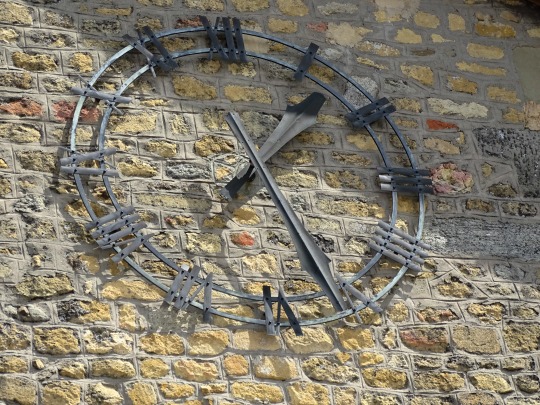


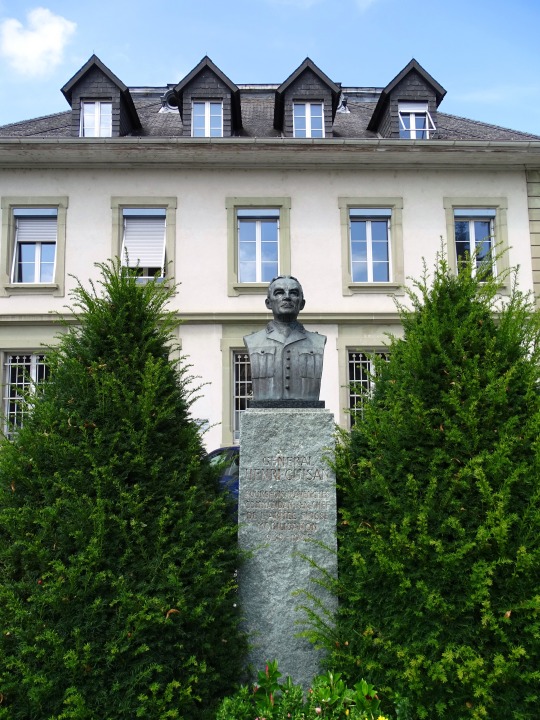
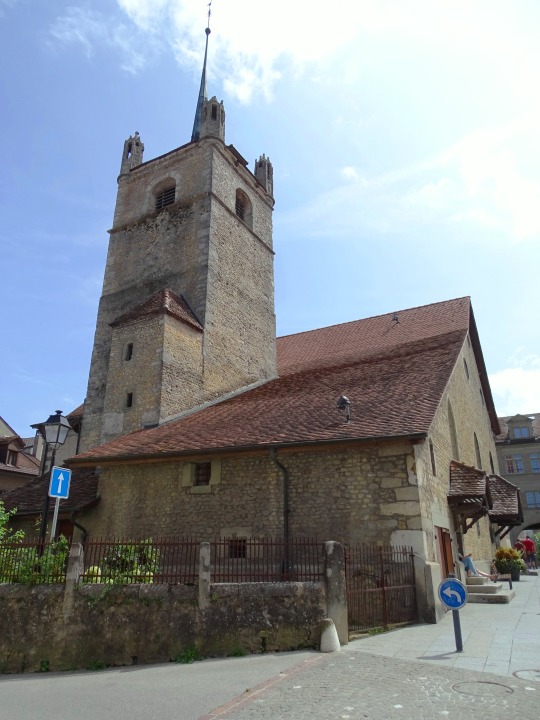

Avenches, Switzerland (No. 1)
Avenches is a Swiss municipality in the canton of Vaud, located in the district of Broye-Vully.
The roots of Avenches go back to the Celts. A tribe of Helvetians had built a settlement on the hills of Bois de Châtel, south of the later Roman settlement. Nearby the Helvetii seem to have had their capital on Mont Vully as shown in recent archaeological excavation. The canal-La Broye-which joins Lac Morat to Lac Neuchâtel is thought to be Roman in origin.
The establishment of the Roman settlement of Aventicum, which became the capital of the province, took place around 15-13 B.C. The name comes from the Helvetian spring goddess Aventia. After patronage by the emperor Vespasian, Aventicum soon developed into a blooming commercial center with over 20,000 inhabitants. The town was granted colonia status-a retirement location for legionaries- although the built up area of the town occupied only a fraction of the walled area -the walls are some 5.6 kilometers in length. The walls were clearly a statement of status rather than being a practical defensive system. Excavations have revealed the detail of the theatre and major temple complex dedicated to the "genius" of Helvetia-Roman Switzerland. One column of the temple stands as the "cigognier"- formerly a nesting site for storks. Other parts of the city still visible are the amphitheatre which includes a later tower now housing the Professor Hans Bogli museum, the baths, the walls, two of the entrances gates, a smaller temple and part of a place building. Excavated but reburied is much of the Roman city. This part of Switzerland was invaded by the Alamanni tribe in the 280's who settled the German speaking parts of Switzerland giving the area its characteristic dialect of German. Rome never really held the area again and after the fall of Rome in the 5th century, a much smaller settlement was built on the former acropolis of the by now abandoned Roman town. The theatre had a short life as a separate defended area. Throughout this period, the town remained the seat of a bishopric and had at least two churches (Saint-Martin and Saint-Symphorian). When the bishop moved his seat to Lausanne in the sixth century, the decline of the former Roman city was complete.
Source: Wikipedia
#Église Sainte-Marie-Madeleine#city hall#town hall#Suisse#Schweiz#Switzerland#Vaud#Waadt#summer 2021#travel#original photography#vacation#tourist attraction#landmark#architecture#Broye-Vully#fountain#Henri Guisan#post office#viillage#French part
2 notes
·
View notes
Text
Southeast Fire Centre sees sudden spike in lightning-caused wildfires
The southeast region of B.C. is seeing a sudden flare-up in wildfires.
As of Friday afternoon, there were 280 wildfires across the province, with 78 listed within the Southeast Fire Centre. Of those, 64 are listed as out of control.
Many of the fires are centred around the Columbia River, with pockets of fires also located around Slocan Lake, Duncan Lake and Kootenay Lake.
Along Slocan Lake,…

View On WordPress
0 notes
Text




Model Sailboat - Met Museum Collection
Inventory Number: 20.3.4
Middle Kingdom, Dynasty 12, ca. 1981–1975 B.C.
Location Information: From Egypt, Upper Egypt, Thebes, Southern Asasif, Tomb of Meketre (TT 280, MMA 1101), MMA excavations, 1920
Description:
Boats of this particular type appear in representations of the "pilgrimage to Abydos" that was part of the Egyptian funerary ritual from the Middle Kingdom onwards. The ritual character of this boat trip is clearly demonstrated by the fact that not the living Meketre but a statue sits under the baldaquin accompanied by a companion (possibly his son), while priests perform offering rituals in front of it.
#model sailboat#middle kingdom#dynasty 12#upper egypt#thebes#southern asasif#tomb of meketre#met museum#20.3.4#mens clothing#MKMC
0 notes
Text

Item: Jose Cuervo Tequila
Materials: Blue agave plants, bottle
Date of photo: Fall 2022
Provenance: State of Jalisco, Mexico
Acquired by: Anne Marie Boardman (with help from Step Flanagan and Rachel Boardman)
Description of relevance to IR: Starting with the Aztecs in 1000 B.C. to 280 A.D., the sap of the agave plant has been used in many contexts. While it was not considered a drink until the Spaniards came to America, tequila participated in an intercultural exchange between European states and Latin American colonies. In a modern-day context, tequila has been under scrutiny from the South African government due to an international agreement that only allows tequila to be produced in Mexico. International offices to further protect the brand name of tequila have been opened in Madrid and Washington; however, states have raised questions as to who should be able to produce tequila in the international sphere.
0 notes
Text
Aristarchus was the first person to hold that the Sun rather than the Earth is at the center of the planetary system, that all the planets go around the Sun rather than the Earth... From the size of the Earth’s shadow on the Moon during a lunar eclipse, he deduced that the Sun had to be much larger than the Earth, as well as very far away.
It is the same idea we associate with the name of Copernicus, whom Galileo described as the “restorer and confirmer,” not the inventor, of the heliocentric hypothesis.* For most of the 1,800 years between Aristarchus and Copernicus nobody knew the correct disposition of the planets, even though it had been laid out perfectly clearly around 280 B.C. The idea outraged some of Aristarchus’ contemporaries. There were cries, like those voiced about Anaxagoras and Bruno and Galileo, that he be condemned for impiety. The resistance to Aristarchus and Copernicus, a kind of geocentrism in everyday life, remains with us: we still talk about the Sun “rising” and the Sun “setting.” It is 2,200 years since Aristarchus, and our language still pretends that the Earth does not turn.
#Cosmos#Carl Sagan#astronomy#science#cosmology#evolution#atypicalreads#nonfiction#history#space#philosophy#classics#popsci#stars#planets#galaxy#solar system#astrobiology#astrophysics#space science#1980s#quotes#natural selection#artificial selection#universe#scientific method#1980
0 notes
Text


~ Idealized head of a veiled woman.
Culture: Greek
Period: Early Hellenistic
Date: 300–280 B.C.
Medium: Black basalt probably from the Fayum oasis (traces of red paint in the hair).
#ancient#ancient art#history#museum#archeology#ancient sculpture#ancient history#archaeology#ancient greek#ancient greece#greek#Hellenistic#idealized head of a veiled woman#woman#300 b.c.#280 b.c.
354 notes
·
View notes
Text

Piendish Bodhisattva Chasing The Darkness From This World (unknown artist, 280 B.C.)
511 notes
·
View notes
Text
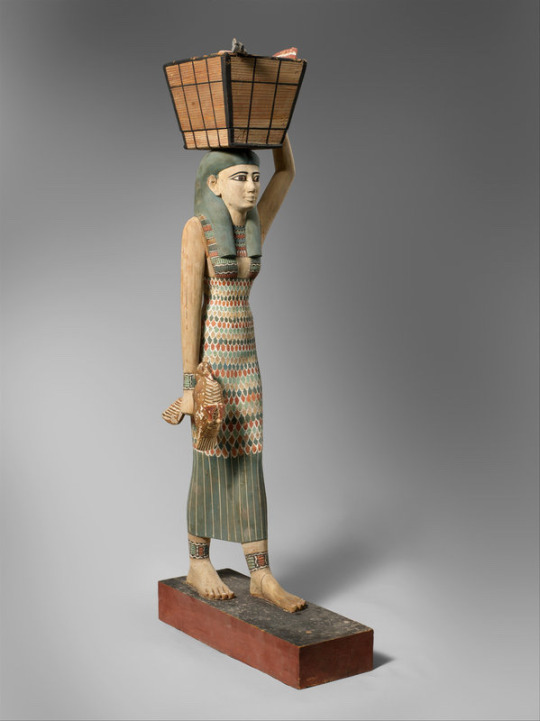
Estate Figure, Middle Kingdom, Dynasty 12, early reign of Amenemhat I, ca. 1981–1975 B.C. From Egypt, Upper Egypt, Thebes, Southern Asasif, Tomb of Meketre (TT 280, MMA 1101), serdab, MMA excavations, 1920. Wood, gesso, paint.
Courtesy Alain Truong
16 notes
·
View notes
Text
In the footsteps of the Incan ancestors

Peruvian children in traditional clothing
Peru means “land of abundance”(in Aymara language) and that is a perfectly chosen word to describe this rich, diverse and colourful country. It is the third largest country in South America after Brazil and Argentina.
Peru has big amounts of mineral, agricultural and marine resources that have long served as its economic foundation.
The cold Peruvian current where upwelling brings abundant nutrients to the water surface there the beneficial effects of the sunlight results in plankton growth, which make these waters one of the world's greatest fishing grounds.
In spite of Peru's tropical location in the Southern Hemisphere it has enormous differences in climate, economical activities and ways of life.Peru is normally divided into three main geographic zones. The Andean highlands, the arid coastline and the largely unpopulated Peruvian Amazon, the rainforest.
This large geographical diversity gives Peru one of the greatest biodiversities in the world. In the upcoming section we will follow the footsteps of the Peruvian forefathers to discover more about this great and colourful country.
First footstep:👣
Our first footstep is the pre Incan culture.
The civilization “Caral” marks the beginning of the Peruvian, as well as the rest of the American continent’s history.
It is estimated to be as old as 5000 years, making it contemporary with the civilizations of Mesopotamia, Egypt, China and India.
Nevertheless, without leaving much trace of evidence of its existence the caral civilization suddenly disappeared and was replaced by the “Chavin” civilization.
In that way the history kept repeating itself and civilization followed civilization, some disappeared by themselves others were conquered by stronger ones.
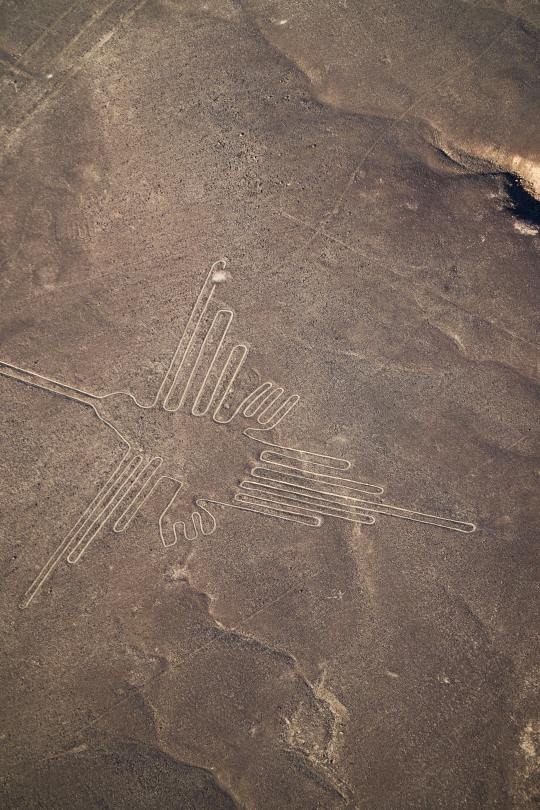
Nasca Lines, Peru
Second Footstep:👣👣
Our second footstep is the Nazca. The Nazcas predated the Incas by as much as 2000 years, in other words 800 B.C and are most famous for having drawn the Nazca lines.
These are huge drawings representing a hummingbird, spider, fish, condor, heron, monkey, lizard, cat, dog and a human or some of the lines are just lines. By making shallow incisions in the desert floor, removing stones and leaving differently coloured dirt exposed, the lines they drew have been preserved during thousands of years due to the extreme environmental circumstances that have helped to preserve them.
The purpose of the lines is unclear but experts presume their purposes are religious.
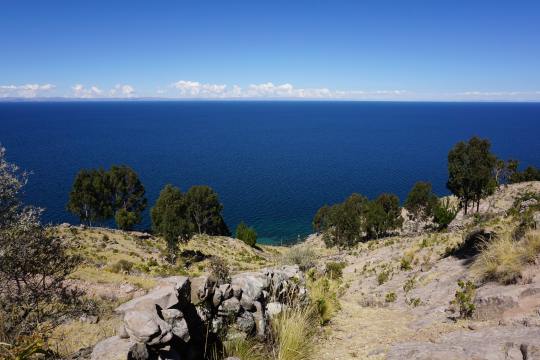
Lake Titicaca, Peru
Third Footstep:👣👣👣
The third footstep is Lake Titicaca. This important lake has a maximum depth of 280 meters and is shared by Peru and Bolivia and is situated high up in the Andes at 3.812 metres. It is the world's highest navigable lake and it is said to be the birthplace of the Incas. The waters of lake Titicaca are famously still and brightly reflexive.
This fresh water lake, that also is one of South America’s largest lakes, is shaped as a puma, herefrom its name Titicaca meaning puma in Aymara language. Today we can see floating villages made of reeds on the lake, where the Uros people live. They rely on fishing and tourism for survival.
We also find protected aquatic wildlife by the lake, special and unique are the giant frogs.

Statue of Pachacutec, Aguas Calientes, Peru
Fourth Footstep:👣👣👣👣
The forth footstep are the Incas.
The Incan Empire was the last chapter of thousands of years of Andean civilization directly preceded by two other large scale Empires, the Tiwanaku 300-1100 A.C in the lake Titicaca region and the Wari or Huari 600-1100 A.C near the city of Ayacucho.
As said earlier the Incan civilization was born by the shores of lake Titicaca and grew to become an Empire, at the time known as “realm of the four parts”. It was the largest Empire in pre-Columbian America.
No monetary currency was used in the Incan Empire but exchange of goods and taxes consisted of a labour obligation of a person to the Empire. Another interesting fact is that they used knotted strings or so called “ quipus” for record keeping and written communication.
The Incas rose to power in the early 13th century and their last stronghold was conquered in 1572 by Spanish conquerors.
Ruins of the Empire can be found across Peru today, some of which are hidden by the rainforest's intense vegetation.
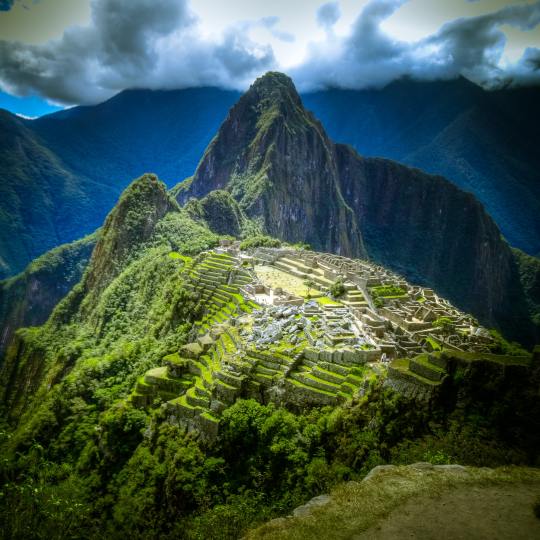
Machu Picchu, Peru
Fifth Footstep:👣👣👣👣👣
One of these ruins and our fifth footstep is Machu Picchu.
Machu Picchu the city in the clouds.
Machu Picchu is one of the only Inca towns to have survived the Spanish conquest.
Believed to have been built in the 1400’s Machu Picchu got the nickname “the lost city of the Incas” because it is said that the Spanish never set foot there.
Because of its position up of two fault lines it experiences frequent earthquakes but thanks to the combination of its intelligent design and sturdy building materials it has survived through time.
There are 150 buildings in this old site and they vary from temples to bathhouses.
Without doubt one of the most impressive architectural features of Machu Picchu is the renowned staircase with 100 steps that have been carved out of one single piece of stone.
On top of that and as far as we know the Incas didn’t have any wheels thus it had to have been hauled to the summit by hand or carved out of the mountain itself.
Machu Picchu translated from Quechua means “old mountain “or “old peak” and it was cleverly built to withstand earthquakes and to avoid landslides. Water collecting systems were built under the buildings inside the mountains.
These systems collected water in drainage basins and the water was later redistributed throughout Machu Picchu and surroundings.
Roads leading to and from Machu Picchu were connected to the Empire’s transport system including paths, bridges and mountain tracks that stretched all over Peru.

Rainbow Mountains
Sixths Footstep:👣👣👣👣👣👣
Even though our sixth footstep doesn’t involve the country’s history it is a remarkably beautiful footstep.
The rainbow mountains.
The colour of these mountains resembles that of a rainbow, here from the name, they are also called “Montaña de siete colores” (the seven coloured mountain). It is situated in the Andean mountain chain at 5.200 meters above sea level.
These beautifully multicoloured mountains with tones of turquoise, lavender,gold, terracotta and red, contain 14 different colours in total. The mountains have got their colours from weathering and mineralogy. The dissimilar colouration developed due to different environmental conditions and mineralogy when the sediment was originally deposited and later día genetically altered. The temperature here is 0 degrees celcius at night. It is one of the world’s most amazing natural wonders!

Chan Chan, Peru
Seventh Footstep:👣👣👣👣👣👣👣
The seventh and last footstep is a combination of some small, scattered and interesting locations.
Framed by three volcanoes and built primarily from white volcanic stones, Arequipa is one of Peru’s most charming colonial cities.
It is here that we find “Santuarios Andinos “ , a small museum with a grisly secret, the mummified remains of the young victims offered as human sacrifices in the peak overlooking the city.
The 550 years old “ice maiden “ Juanita is the best preserved of the mummies.
Even though the south of Peru is a land of Misty volcanoes here we also find one of the world's deepest canyons “Colca” with a depth of 3.250 meters, where mighty condors live. The tribe”los collaguas” who also lived here in the high part of the canyon, used to bury their dead by digging a hole along the steep rocky canyon and marking it with red paint. Faint red stains can still be found today when driving along the canyon on the roads on the tops of the mountains.
In the northern parts of Peru where the Moche civilization had its stronghold around 300 A.D, we find the Lord of Sipán (señor de Sipán). His remains were found not too long ago as the first of a group of mummies found at Huaca Rajada, Sipán.
Lord of Sipán was 35-45 years old when he died but it is his treasures that amazed the world as most of his ornaments were either gold, silver, bronze or semi precious stones.
The Incan bath houses are situated in Cajamarca, it is centred on a spa which uses thermal spring water with medical and therapeutic benefits.
It is said to have been the favourite place of the Incan Lord Atawallpa.
Another remarkable location is the Chanchan cultures sand houses in the capital of the Chimu kingdom, they are from the 15th century and still standing today.

Gold Treasures
Conclusion:
Having followed the footsteps, we have reached the end of our mountain trail. This marks the finish line of our journey in Peru leaving us with the conclusion.
Peru, as the rest of Latin America, are rich and abundant countries. They are also known for centuries to have been rich in precious metals such as gold and silver.
It is not difficult to imagine where the rumours of “ El dorado” come from.
Whether it is imaginary, based on legends or somewhat truth based.
One can ask himself if there was nothing else behind Columbus' voyage to the “ new world”.
Al khashkhash ibn Said ibn Aswad , an Andalusian citizen from Còrdoba, traveled with a group of friends by ship and crossed the “sea of darkness”(that’s what the Arabs used to call the Atlantic Ocean). On his return in 889 A.C he shared his stories about what he saw and the people he met.
Imam al Shabi, wrote in one of his books 600 A.C about a land behind al Andalus, as far away from there as “we” are from al Andalus.
In any case, they were not the only ones to have discovered the”big land”.
According to the Arabs the Africans, to be more precise the Malians, also traveled to Latin America, they as well as the Arabs went to the Americas in pre-Columbian times.
Mali was one of the richest and most developed countries in Africa in the 14th century.
Could Columbus have been so confused or misinformed or was it a “cover up expedition” as an excuse to conquer and plunder “the big land”???
Information obtained from;
Etapas históricas del Perú www gob.pe gobierno del Perú,
National Geographic’s Megastructures,
Historical Arabic sources, and
A special thanks to a dear friend for providing insight and support.
#travel#history#peru#south america#inca#colombus#writblr#writers#writers on tumblr#machu picchu#rainbow mountain#rainbow#titicaca#lake titicaca#nazca#nazca lines
30 notes
·
View notes
Text
Post-secondary students in British Columbia will soon have access to a hefty increase in student loan funding.
The province’s 2023-2024 budget is doubling the maximum B.C. student loan payout from $110 to $220 per week for individuals and from $140 to $280 per week for students with dependents.
The changes are expected to take effect in June.
Student loan recipients earning under $40,000 per year will also be exempt from repayments starting this year, up from a previous maximum of $25,000. The change will align B.C.’s student loan repayment schedule with that of the federal government. [...]
Continue Reading.
Tagging: @politicsofcanada
#cdnpoli#British Columbia#post secondary education#financial aid#student loans#student loan repayment
30 notes
·
View notes
Photo

Magical Stela (Cippus) of Horus This small stela 𓎘𓅱𓆓𓉸 “wḏ” OR 𓂝𓃀𓍋 “ˁb3” is called a cippus. Beneath a Bes 𓃀𓋴𓄜𓁲 “bs” image 𓏏𓅱𓏏𓀾 “twt” , the infant 𓈖𓈖𓀔 “nn” Horus 𓅄 “ḥrw”, surrounded by protective deities 𓊹𓊹𓊹 “nṯrw” subdues dangerous animals. On the rear 𓄖𓏲𓏭 “pḥ.wy” is a winged sun-disk 𓇋𓏏𓈖𓇳 “ı͗tn” accompanied by nine-gods 𓇷𓏏𓊹𓊹𓊹𓀭𓏪 “psḏ.t”. The text at the top and on the sides, back, and base is a Spell for Protection 𓎃 “s3” (while) on Water 𓈗 “mw”. The vertical texts alongside Horus transform 𓋴𓆣𓂋 “sḫpr” water into a curative libation 𓇋𓃀𓅱𓈗 “ı͗bḥw”. Period: Ptolemaic Period Date: 332–280 B.C. Geography: From Egypt Medium: Chlorite schist Dimensions: H. 20.5 cm (8 1/16 in.); W. 12 cm (4 3/4 in.); D. 4.5 cm (1 3/4 in.) 𓋹𓎬𓋹𓎬𓋹𓎬𓋹𓎬𓋹𓎬𓋹𓎬𓋹𓎬𓋹𓎬𓋹𓎬𓋹𓎬𓋹𓎬𓋹𓎬𓋹𓎬𓋹𓎬𓋹𓎬𓋹𓎬 📸 1-3 @egyptologylessons 𓋹𓊽𓋴𓆖𓎛𓇳𓎛 © ( 📸 4-7 @metmuseum and description) 𓊁𓊁𓊁𓊁𓊁𓊁𓊁𓊁𓊁𓊁𓊁𓊁𓊁𓊁𓊁𓊁𓊁 #Ancienthistory #historyfacts #historylovers #ancientegypt #hieroglyphics #ägypten #egyptologist #egyptianhistory #egyptology #hieroglyphs #egypte #egyptians #egitto #埃及 #مصر #egipto #이집트 #art #culture #history #cippi #horus #metropolitanmuseumofart #magic https://www.instagram.com/p/CbDiC1yujfU/?utm_medium=tumblr
#ancienthistory#historyfacts#historylovers#ancientegypt#hieroglyphics#ägypten#egyptologist#egyptianhistory#egyptology#hieroglyphs#egypte#egyptians#egitto#埃及#مصر#egipto#이집트#art#culture#history#cippi#horus#metropolitanmuseumofart#magic
10 notes
·
View notes